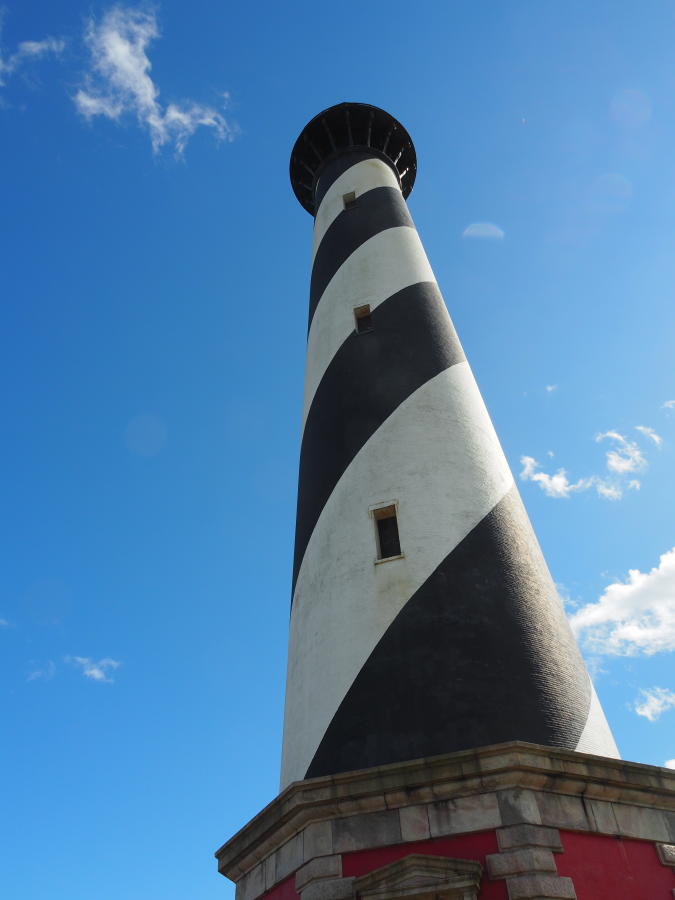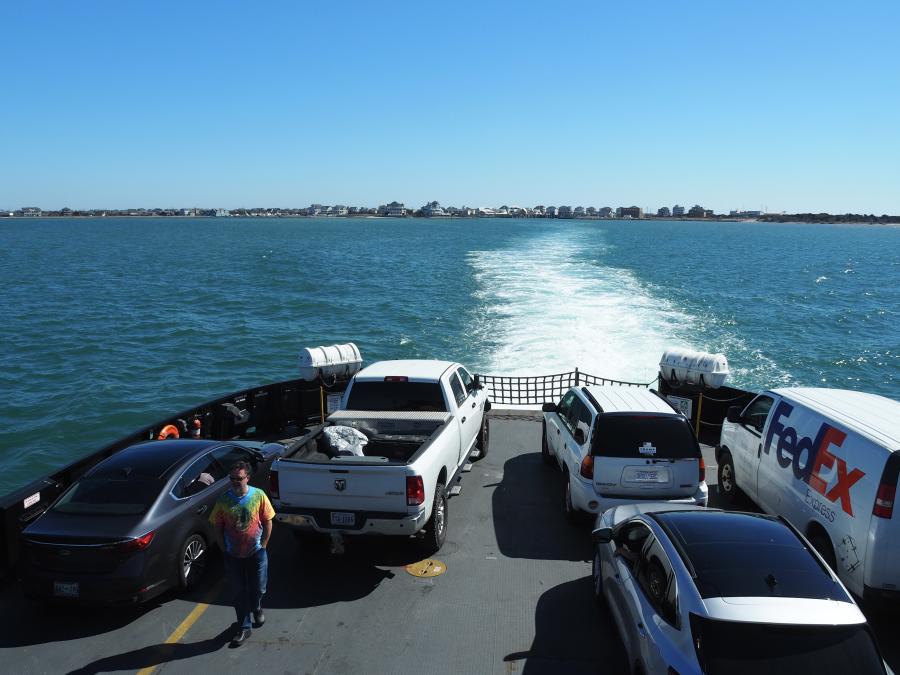Oh-so often the highlights of a destination come with a hefty dip into your wallet. Quite the opposite is true on the Outer Banks—that gorgeous 130-mile strip of barrier island off North Carolina’s Atlantic coast—where that old adage that “the best things in life are free” rings true.
We found there was so much on offer at this one-of-a-kind spot that the biggest challenge was choosing and trying to see and do as much as possible.
Love those beaches
You could be forgiven if you never left the Outer Banks’ stunning beaches. A large part of the entire sweep is the Cape Hatteras National Seashore (the first one in the nation) reaching from just south of Whalebone to the tip of Hatteras and Ocracoke Islands. This fragile shoreline is home to nesting birds and turtles and is under special protection—use pathways and stay off the dunes; dogs must be on a leash.

From mid-spring through late summer the beaches are busy with visitors looking to escape the sweltering summer heat. But through the shoulder seasons—both spring and fall—we found we often had the sand to ourselves. It was beyond perfect for barefoot beach walks, gathering shells, building sandcastles and evening fires on the sand. You can also throw a fishing line in the water (there’s a nominal license fee for individuals over age 16) or grab a flashlight and hunt the sand for ghost crabs from late May to early September.
The Outer Banks are also renowned for the winds, which are perfect for launching a kite or windsurfing. On the soundside, the waters are calmer and if you bring a standup paddleboard you could easily pass a half-day at Canadian Hole in Pamlico Sound.
We are great walkers and lovers of the ocean, so walks in the morning and late afternoon perfectly bookended each day. There are many marked pull-offs and parking areas with trails over the dunes to the water. Getting there won’t be a problem. Can’t say it will be as easy to leave.
Get your fill of nature
The shifting sand mesmerizes at stops like Jockey’s Ridge State Park, home to the highest natural sand dunes on the east coast. Entry to the park is free and you’ll think you’ve landed in the nation’s largest sandbox. Special programs include guided dune walks and spotting for migrating raptors like peregrine falcons and hawks.
We always bring along binoculars for birding, but also to watch the nighttime action as the stars pop out in ink-black skies that are some of the darkest east of the Mississippi. With so little light pollution, the stars tumble right down to the horizon. Binoculars bring those little smudges into focus, and soon we were oohing and aah-ing at clusters of light and pointing out celestial bodies like Orion and the Milky Way.
If you wanted to spot the latest models of cars, you’d sit by the highway. Well, turns out the Outer Banks is right along the Atlantic Flyway, the “highway” for birds as they follow their seasonal migratory paths. Spring and fall are especially good times as birds are moving north-south, others are mating and nesting. More than 420 species of birds have been recorded in this strip of shoreline, making it a primo birding location.

With trusty binoculars in hand, we stopped at Pea Island National Wildlife Refuge to start with bird watching over the dunes—pelicans, Northern gannet, terns and razorbill—then crossed the highway to walk the North Pond Wildlife Trail where we spotted ibis, ducks, bufflehead and tundra swans.
It was a short drive inland along Highway 64 to the oft-overlooked Alligator River National Wildlife Refuge for more bird and wildlife watching. The 154,000-acre refuge was established as a protected environment for black bears—the refuge has the highest density along the Eastern Seaboard—and the reclusive and endangered red wolves.
Touch a little history
Nicknamed the Graveyard of the Atlantic, the waters off the Outer Banks are littered with thousands of shipwrecks, and the curved barrier islands are pinpointed with lifesaving stations and lighthouses.
In the 1870s, a series of towering lighthouses was built to broadcast warning signals of the coastline’s danger. The picturesque black-and-white striped Bodie Island Lighthouse and candy-striped Cape Hatteras Lighthouse still blink as beacons of protection along the shoreline. Both are historic parts of Cape Hatteras National Seashore. Just walking the grounds—with camera in hand—is a treat. In the high season (and for a modest cost) visitors can climb the spiral staircase winding inside the Bodie Island station for birds-eye views. Cape Hatteras Lighthouse climbs are closed for the 2024 season due to restorations.

In days gone by, the island of Ocracoke was accessible only by private boat. Life changed when the public ferry began service. Ferries spell “v-a-c-a-t-i-o-n” mindset to me and at the tip of Hatteras Island we hopped onto the free ferry for the 70-minute crossing to Ocracoke; did a little drive to see the island’s ponies and back onto the hourly ferry to Hatteras.
Right near the ferry dock on Hatteras is the free Graveyard of the Atlantic Museum, dedicated to the maritime culture and history of the Outer Banks. Why are there so many shipwrecks—2,000-plus—along this stretch of coastline? Strong winds form relentless currents which constantly shift the underwater sand bars, creating hazardous shoals that are almost impossible for ship’s navigators to see. Once run aground, ships were like sitting ducks and at the mercy of the wind, waves and even pirates who plundered the big vessels. The Graveyard of the Atlantic Museum has undergone extensive additions and renovations and will be reopening in May of 2024.
And if you’ve still got time . . .
Walk the boardwalk along the soundside at Duck.
Stroll the piers from Kitty Hawk to Hatteras (some require a small fee).
Explore the village streets of historic downtown Manteo.
Explore the U.S. Weather Bureau Station in Hatteras.
Launch a kayak at one of our many public boat ramps or sound accesses.
Visit Fort Raleigh National Historic Site for a free look into the first New World settlement.
Follow along the African American History Trail or Civil War Trail for more insight into OBX history.

Like all great destinations, it’s important to add in downtime to relax, listen to the waves, read, and have a snooze. As we packed up our van, we looked at each other and sighed. “Couldn’t do it all,” my husband said.
And could there ever be a better excuse for a return trip? Outer Banks: Thanks for your hospitality. We’ll see you again soon.


